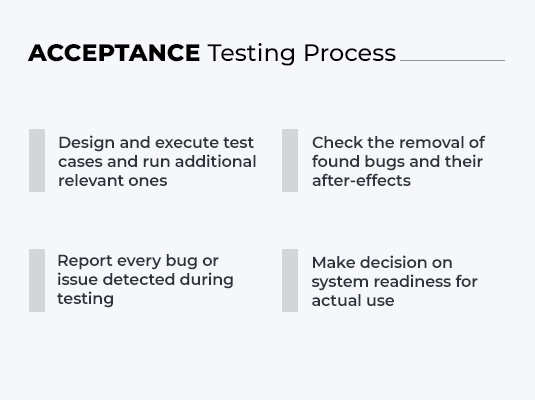Is your website designed for everyone? Perform an accessibility scan.
Acceptance Testing
In order to evaluate system readiness and compliance with specified business objectives and requirements, QATestLab provides acceptance testing. We check whether the software satisfies all requirement specifications, customer’s expectations and standards. By verifying acceptability, we make sure that the system is ready to market.
We evaluate system acceptability in four different forms - user acceptance testing, business acceptance testing, alpha testing/internal acceptance testing and beta testing. Acceptance testing provides customers with guidance about if the software is acceptable for delivery, requires obligatory modifications, or if it is unacceptable.
How We Test
Having analyzed project documentation, customers’ requirements, business goals, and end user needs, we start to perform acceptance testing. Usually, we conduct tests after successful system testing but it can also depend on development methodology and project specifics.
Based on acceptance criteria, we develop the acceptance test plan which forms part of the general test plan. We perform testing activities based on written test documentation approved by the customer.
Thanks to close collaboration and constant communication with project stakeholders and the development team, we have a full understanding and clear vision of how the final product should operate and its objectives.
By involving customers and domain experts in test case creation, we avoid technical details of component implementation which ensures acceptance tests are easily understandable for customers.

Final Test Before Release
We design test cases from the perspective of the end user and perform acceptance testing using real-world scenarios. Moreover, we also include the verification of atypical use cases to detect and prevent potential software malfunction. We also cover usability issues through acceptance testing.
Acceptance testing is crucial as it is the final step before product release. Based on our objective evaluation, we never recommend releasing software that still has unresolved issues. We care about our customers’ reputation and how that reflects on our own reputation.
